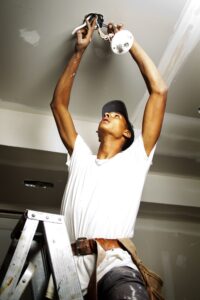When it comes to home improvement, fixture installation is often one of the most overlooked aspects. Many homeowners focus on large renovations like kitchen remodels or bathroom upgrades, but the importance of properly installing fixtures should not be underestimated. Fixtures play a crucial role in both functionality and aesthetics. Whether you’re upgrading your lighting, faucets, or other fixtures, doing it right can make all the difference.
Why Fixture Installation Matters
Understanding the significance of fixture installation can save you from potential headaches down the road. When fixtures are improperly installed, it can lead to a myriad of issues, including leaks, electrical problems, or even structural damage. Moreover, an aesthetically pleasing fixture can enhance the overall look of your space, making it feel more inviting and well-maintained.
Types of Fixtures You Might Consider
- Lighting fixtures – chandeliers, sconces, ceiling lights, and more
- Plumbing fixtures – sinks, faucets, and toilets
- Electrical fixtures – outlets, switches, and ceiling fans
- Decorative fixtures – wall art, shelves, and mirrors
Common Challenges in Fixture Installation
Even though it may seem straightforward, fixture installation can present various challenges. For instance, if you’re dealing with plumbing fixtures, ensuring there are no leaks is essential. Electrical fixtures require a bit of knowledge about wiring and safety protocols. Each type of fixture comes with its own set of complexities that require attention to detail.
Tools You’ll Need for Installation
Before diving into installation, gathering the right tools is crucial. Here’s a brief list of what you might need:
- Screwdrivers (flathead and Phillips)
- Drill
- Pliers
- Level
- Tape measure
- Wrench
- Electrical tape (for electrical fixtures)
- Sealant (for plumbing fixtures)
Steps for Successful Fixture Installation
Now that you have an understanding of the importance of proper installation and the tools needed, let’s break down the steps for successful fixture installation.
Step 1: Plan Ahead
Before you start, take the time to plan where your fixtures will go. Measure the space to ensure that the new fixture will fit perfectly. If it’s a lighting fixture, consider the height and brightness needed. For plumbing, ensure that water supply lines are accessible.
Step 2: Turn Off the Power or Water Supply
Safety first! Always turn off the power at the circuit breaker for electrical installations or shut off the water supply for plumbing fixtures. This step is crucial to avoid accidents and injuries.
Step 3: Remove the Old Fixture
Carefully remove the old fixture. For lighting, unscrew the base and disconnect the wires. For plumbing, detach the existing faucet or sink by loosening the nuts. Ensure that you have a bucket handy to catch any residual water.
Step 4: Follow Manufacturer Instructions
Each fixture comes with its own set of instructions. Following the manufacturer’s guidelines is vital for a successful installation. This step helps avoid common pitfalls and ensures that you adhere to safety standards.
Step 5: Install the New Fixture
Once you’ve prepared the area, it’s time to install the new fixture. For electrical fixtures, connect the wires according to their color coding (black to black, white to white, and ground to ground). For plumbing, use sealant to prevent leaks and secure the fixture tightly.
Step 6: Test the Installation
After the installation, turn the power or water supply back on and test the fixture. Check for any leaks in plumbing fixtures or ensure that the electrical fixture works correctly. If there are any issues, you may need to troubleshoot.
Tips for a Smooth Fixture Installation
Here are some practical tips to make your fixture installation smoother:
- Always read the manual before starting the installation.
- Take your time; rushing can lead to mistakes.
- Don’t hesitate to ask for help if you’re unsure about something.
- Consider hiring a professional if the installation seems too complex.
Frequently Asked Questions
How long does it take to install a fixture?
The time it takes to install a fixture depends on the type of fixture and your experience level. Generally, it can take anywhere from 30 minutes to a few hours.
Can I install fixtures myself?
Yes, many homeowners successfully install fixtures themselves. However, if you’re not comfortable with electrical or plumbing work, it’s best to hire a professional.
What should I do if I encounter a problem during installation?
If you run into issues, refer back to the manufacturer’s instructions. If you’re still unsure, consider seeking advice from a professional handyman.
Are there any safety precautions I should take?
Always turn off the power or water supply before starting any installation. Use safety gear, like gloves and goggles, if necessary.
Conclusion
In summary, proper fixture installation is essential for both function and style in your home. With the right tools, a solid plan, and a little patience, homeowners can tackle this task with confidence. Remember, it’s always okay to seek professional assistance if you feel overwhelmed. Your home deserves the best!






